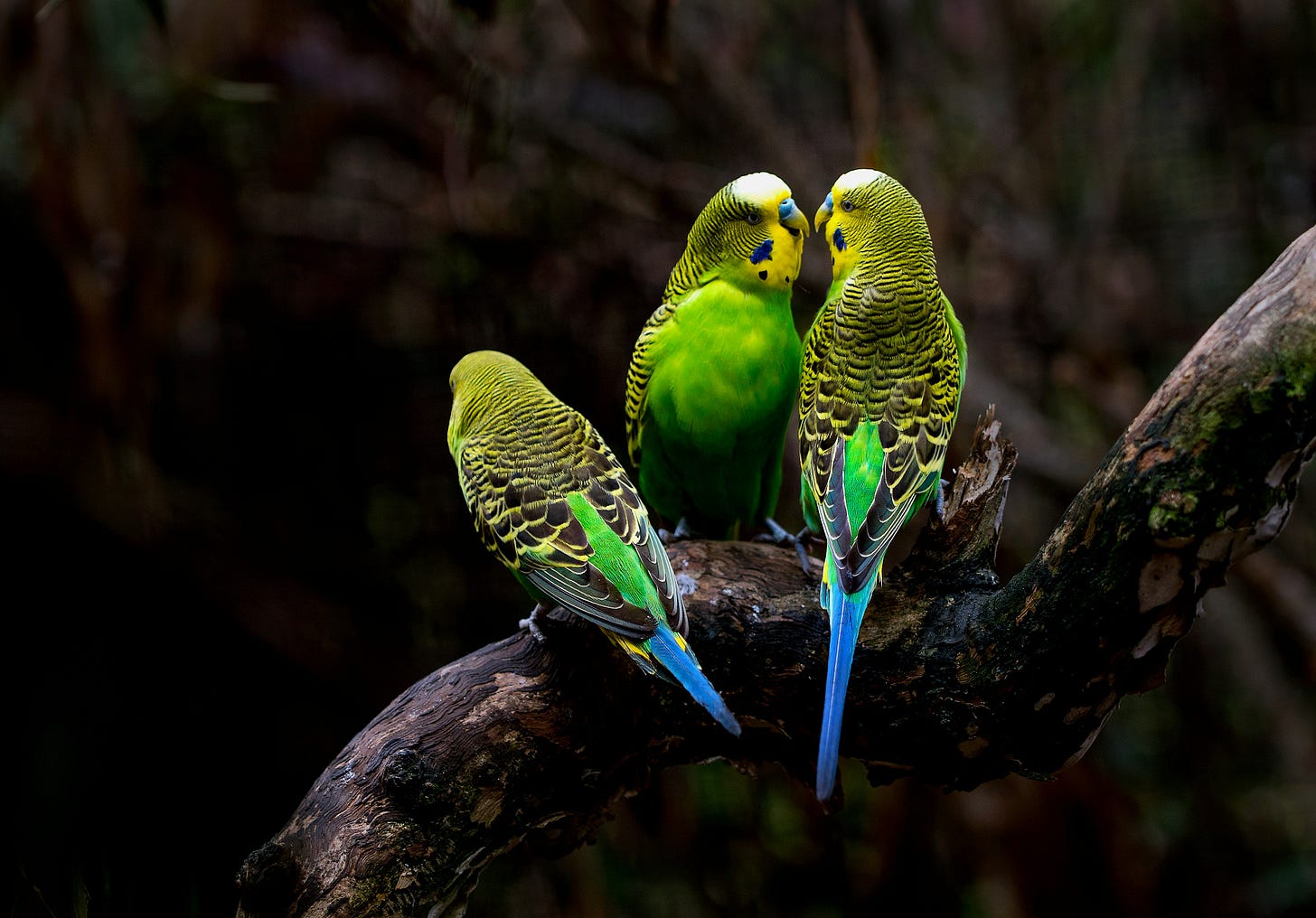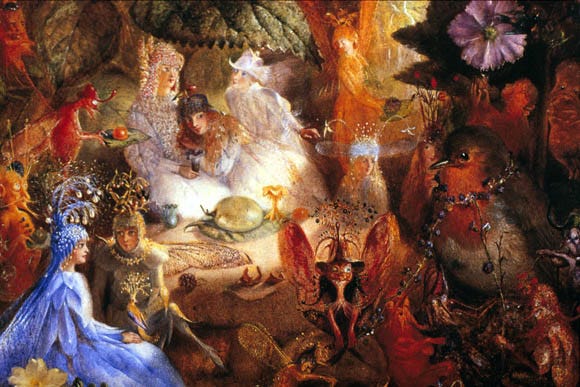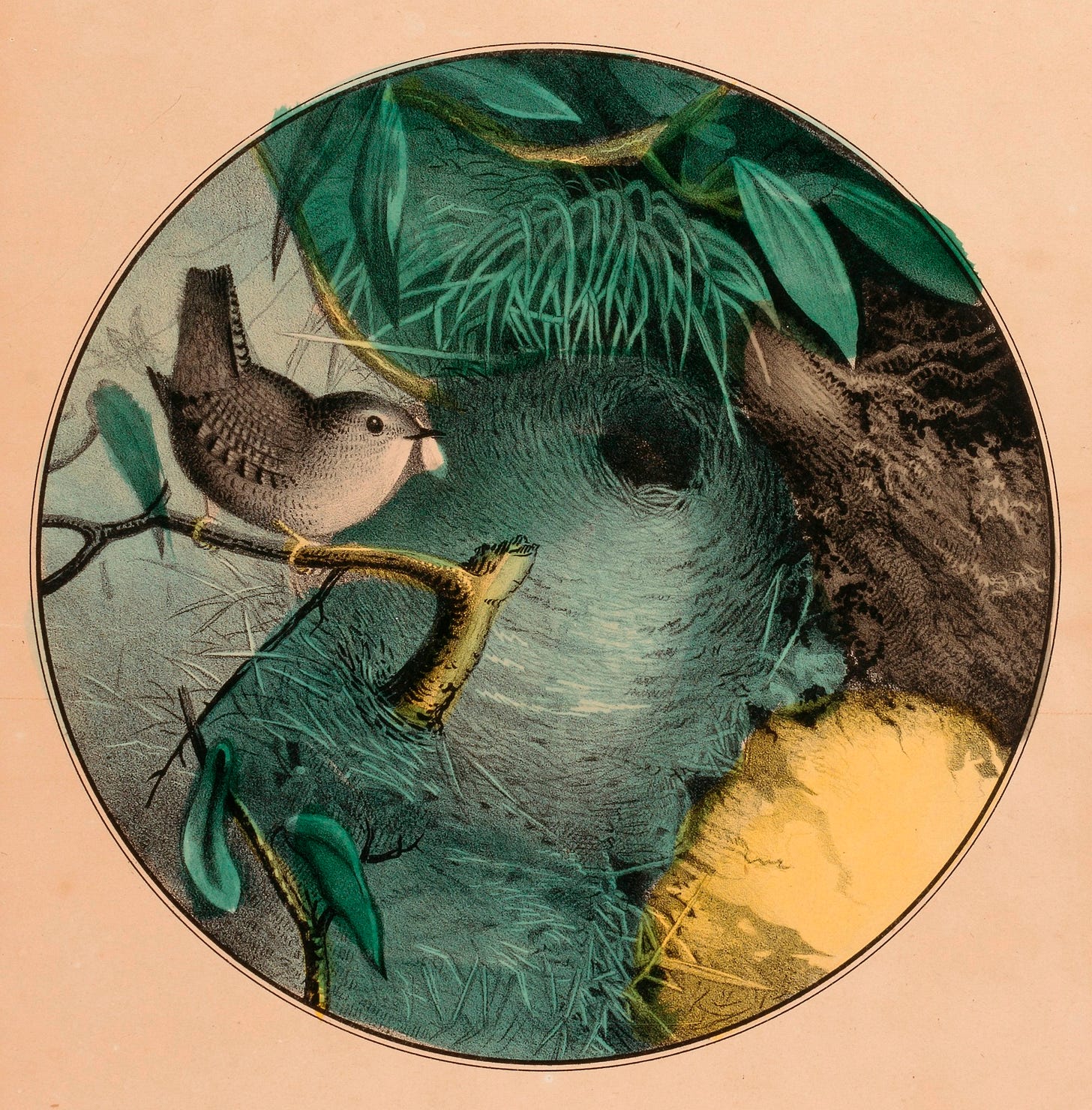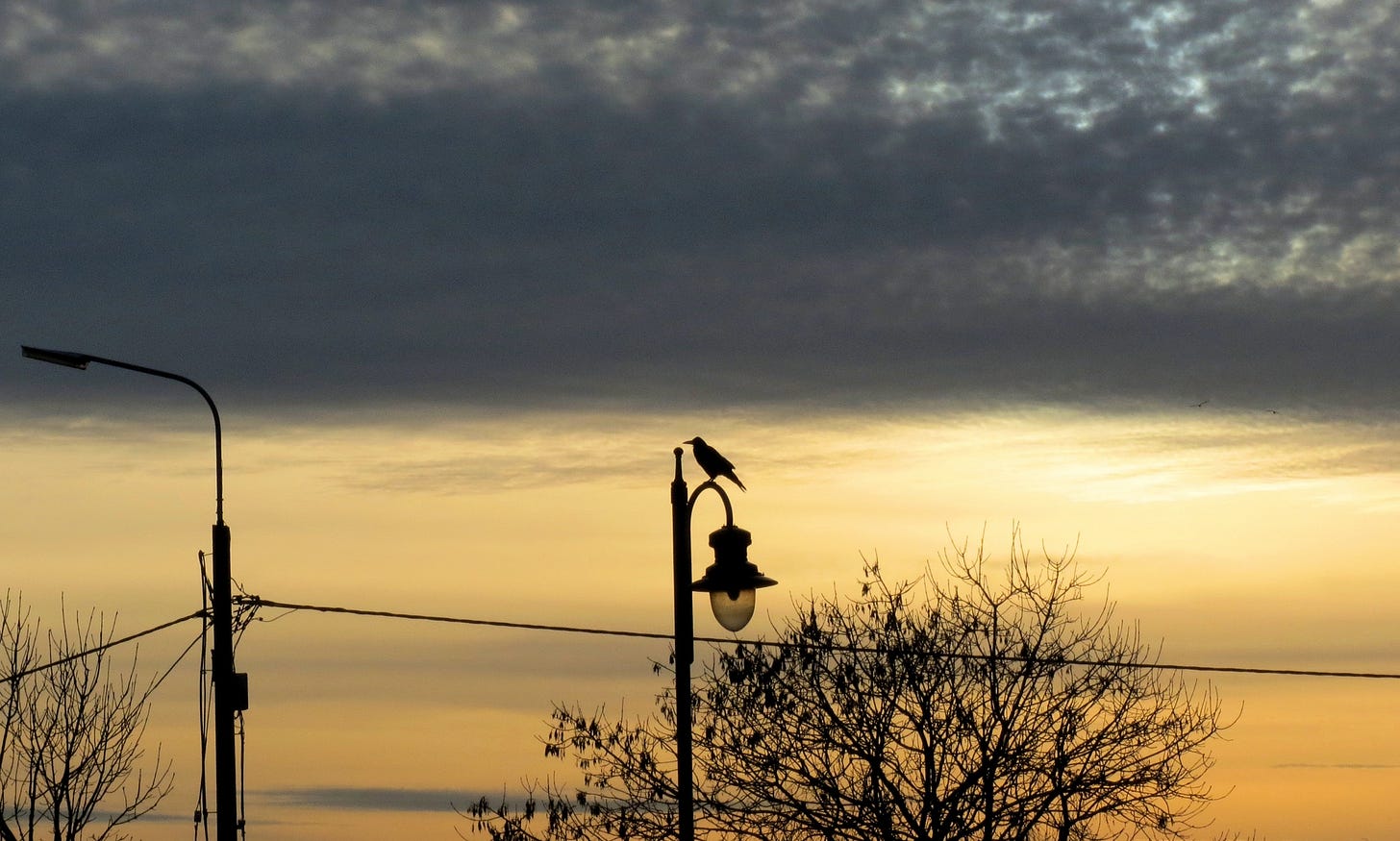Birbs
tuning into the natural soundtracks of our lives
Dear word explorer,
For those who are not aware, birb is an affectionate term for bird which arose from Internet usage around late 2012. It’s a softer, cuter word, and its deployment is used to convey an absurd or fond characterisation for our feathered friends.
I’ve long had the habit of saying hello to wild birds (or birbs) which pass my path, especially when they perch close and exhibit any curiosity about my excursions. It simply feels polite to nod or whistle in acknowledgment and some of them are clearly intrigued by the interaction. It may also arise from my childhood, since we had a couple of Budgerigars over the years and they had distinct personalities.
The worst moment of that experience was walking into my mother’s kitchen and finding a local cat hanging off the side of the Budgie’s cage with one arm stretched inside, while the terrified bird cowered in a corner. We still do not know how the feline snuck into the house and unlatched the cage door!

Far less exotic, a gang of neighbouring jackdaws roost in nearby trees and occasionally conduct meetings upon the roof of my house. When they are in a rambunctious mood it sounds like a little herd of elephants gallumping across the tiles. Occasionally I stride into the back garden to demand they calm down or move on. A couple of weeks ago I broke up a proper claw-slashing fight going on between two of them as they rolled about on my eaves. A semi-circle of onlookers loudly cawed encouragement at the spectacle.
I yelled at them to break it up and they scattered into the skies.
Jackdaws belong to the corvid family of birds, all of which are an exceptionally clever. In Ireland they are commonly represented by magpies, rooks, hooded crows, choughs and ravens. They are present throughout the country, and with their distinctive dark plumage, sharp observation and intelligence, they sometimes get a bad rap.
Mythologically, birds are tightly associated with divine messengers or companions to the gods because of their capacity for flight. They can traverse vast distances and move between the realms of the heavens and of earth. They can spy upon events from far above or slip easily among concealing shrubs. Anyone who has witnessed birds riding wild breezes knows they adore their command of the air. Their capacity for flight equates to freedom. No wonder all the great hybrid creatures, such as angels, griffins, Pegasus, sphinxes, sirens, furies, harpies, Garuda, and Anunnaki all possessed wings. It is independence and majesty. Many countries have birds as national emblems.
In Ireland the hooded crow was one of the forms of the war goddess, the Morrígan (Mór-ríoghan, which probably translates as ‘great queen’ or ‘phantom queen’). This should not be surprising since such fowl flock to battlefields to perform their duties as carrion birds. Morrígan was part of a trio of battle goddesses, including Badb and Macha. Badh was also known as Badb Catha (‘battle crow’), so the association with the birds is very strong.
The Morrígan could foretell the future, control the weather (including summoning a rain of fire or blood upon her enemies), shapeshift into birds and animals, her battle shrieks could cause warriors to die from fright, and she never forgave disrespect.
So perhaps it is sensible to nod your head and say good day to the hooded crow or one of its relatives…
For those with any access to green spaces the Robin is one of the most visible and curious of wee birbs. Both males and females are almost identical with the distinctive orange-hued chest, plus they both sing. They clearly recognise their local humans and often form close attachments to them. They are often referred to as the ‘farmer’s friend’, and that’s because Robins know if they follow gardeners they are likely to get first dibs on grubs and worms unearthed after a day’s toil.
Humans interpret Robins’ behaviour as cheeky and companionable, but the Red Breasts are territorially aggressive and protect their patch against their kin with wrathful dedication. What we perceive as merry tunes are songs of seduction to potential mates, and blistering threats to warn off intruders. Unlike most birds, Robins sing all year long, which makes them the beloved troubadour of winter and a common element on holiday cards. They are far more complex; steadfast mates and fierce guardians.
It’s hard to grasp how many birds (especially the shy and careful varieties) are about at any time. People who employ bird feeders in their outdoor spaces have a better sense of the multitude of residents, especially those who have bird-cams on their feeders. If you enjoy observing birds, there are plenty of online cameras you can tune into which are trained on popular feeding spots or nesting boxes around the world.
Even in cities there is a huge cast of flying creatures living in rooftops, nesting in nooks and crannies, feeding off insects and snatching up vermin.1
For instance, in the great metropolis of New York:
The Big Apple has, in recent decades, become home to large resident and breeding populations of four diurnal raptor species: Red-tailed Hawk, Peregrine Falcon, American Kestrel, and Osprey. Three owl species—Great Horned, Barn, and Screech Owls—also nest in the City's largest parks. Bald Eagles have become year-round residents in recent years—and after several unsuccessful nesting attempts on Staten Island, fledged young there for the first time in 2017.2
Right now is when the birdsong medley is at its peak, and International Dawn Chorus Day took place last Sunday. This celebration of nature’s symphony started as a humble event in Birmingham, UK in the 1980s and is now a festival in over eighty countries.
In Ireland, The Dawn Chorus is an annual 7-hour programme of nature-themed songs and stories broadcast on Lyric FM from midnight until dawn. On Sunday they completed their 30th broadcast from Cuskinny Marsh Nature Reserve in County Cork.
Thanks to a friend of mine I recently discovered the Merlin Bird ID app from the Cornell Lab of Ornithology which is designed to help figure out ‘what’s that bird?’
I don’t consider myself a bird-spotter, but I enjoy birdsong and pay attention to the activity of birds as part of a meditative practice of being aware of Nature in my area. Over the last few months I started observing birds a lot more, and it felt like the birds interacted with me a little more frequently. I’ve stopped listening to music/podcasts on my walks as a way to remain relaxed and centred in the moment. There is some evidence that listening to birdsong regularly (even recordings3) can reduce stress and provide a sense of joy.
Using the Merlin app I’ve sampled birdsong in a number of locations, including my garden. I’ve been surprised at the sheer number of birds flitting about at different times of the day, including the usual suspects: the Robin, Magpie, Rook, Wren, Chiffchaff, Swallow, Woodpigeon, Blue Tit, Great Tit, Blackbird, Goldcrest, and Pied Wagtail, and those that were less well known to me: the Meadow Pipit, Blackcap, and Whitethroat.
In quieter parklands I’ve also heard the Chaffinch, Willow Warbler, Treecreeper, Song Thrush, Mistle Thrush, Whimbrel, Great Northern Diver and Dunnock. I’m looking forward to wandering in other locations and discovering what birds I can add to my list.
As I was standing in my local woods with my smartphone sitting on a tree stump, sampling the surrounding noise, I considered the other sounds impinging: such as the distant rumble of traffic, the faint shouts of adults and children having a picnic, and the gasps and footfall of an approaching jogger. There are many times when I’m out in parks and I feel myself becoming irritated with how loud people talk when moving through open spaces. I’m most happy when I’m rambling on my own, enmeshed with the forest’s natural ambiance.
But it made me consider the birds, and their tangle of songs. Are some of them bellowing insults while others are spreading sly gossip? Do they bemoan the accents of their loud neighbours and attempt to escape the boorish climate pundit? Who is the nosy leaf-twitcher, the nervous alarmist, and who is the sweet-faced mentor or kind-hearted worm-sharer? Their interactions are not discordant to us4, but perhaps it’s cacophony to them. Maybe it’s their ideal environment.
I noticed how birds mostly ignore people, even the most boisterous human chatterboxes (except when they have food).
The only time the birds hushed was when we all heard the distinct sound of a boy laughing, whacking a stick, and his companion dog barked.
It vibrated through the quiet cathedral of trees.
The sun-haloed leaves whispered caution, so the birds paused to preen for a while.
And the greatest thieves of coastal towns: brazen seagulls, which will rip chips out of the hands of humans if given the chance.
Ideally birdsong should be experienced outside so you obtain the added benefit of being in nature.
There are times — such as 4 am in the summer when the birds greet the sunrise —that birdsong can be grating. Not all birds have pretty tunes. Yet, over time, it all settles into the background sound of your neighbourhood.







Enjoyed this Maura. I’m Irish descent, and can relate to a lot of what you say. Such fascinating, complex creatures, birbs!
Terrific photos Maura!
Went for a loooong walk with a friend today and heard the cuckoo (I don't believe I've ever heard it in May before) and I think larks, plus a black and white birb I did not recognise. Will download Merlin. Thanks.x